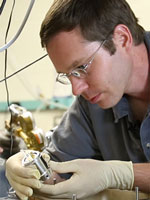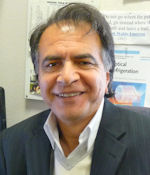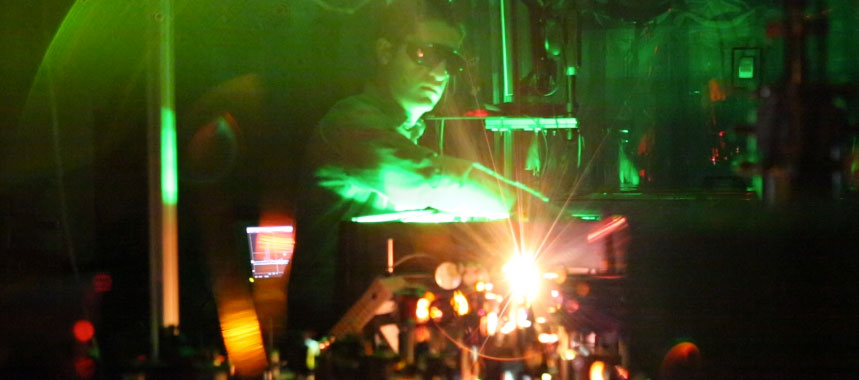Recent News
CHTM Joins NSF's NQVL Pilot Projects
August 9, 2024
OSE PHD, Dr. Xuefeng Li - Wins The Outstanding Interdisciplinary Graduate Programs Award
May 10, 2024
Dr. Ali Rastegari - 2024 OSE Best Dissertation Award Winner
May 10, 2024
2024 OSE Spring and Summer Graduates
May 10, 2024
News Archives
Optical physicists record lowest temperature ever in solids using laser cooling
October 5, 2016 - Excerpted from an article by Aaron Hilf for the UNM Newsroom

Alexander Albrecht examines the world's first solid-state cryocooler – a device developed and built at UNM
Dr. Mansoor Sheik-Bahae, distinguished professor of physics and astronomy, along with his research group, are advancing a technique called optical refrigeration to reach cryogenic temperature. Essentially, the group is using laser light to chill a special type of crystal, which can then be attached to a device that requires constant and reliable cooling, like infrared detectors on satellites. What sets their technique apart is the temperatures it can cool to without having any moving parts.

Dr. Mansoor Sheik-Bahae
“Right now, anything that cools other parts of a system has moving parts. Most of the time, there’s liquid running through it that adds vibrations which can impact the precision or resolution of the device,” explained Aram Gragossian, a research assistant in Sheik-Bahae’s lab. “But, when you have optical refrigeration, you can go to low temperatures without any vibrations and without any moving parts, making it convenient for a lot of applications.”
Earlier this year, Sheik-Bahae, along with collaborators at UNM, and Los Alamos National Labs, reached the lowest temperatures ever recorded using an all-solid-state cryocooler – 91 kelvin or -296° Fahrenheit – temperatures that were previously only able to be reached using liquid nitrogen or helium. The research, Solid-state optical refrigeration to sub-100 Kelvin regime, was published in the journal of (Nature) Scientific Reports 6.
“Here at UNM, we are the only group in the world that’s been able to cool to cryogenic temperatures with an all-solid-state optical cryocooler,” said Alexander Albrecht, one of the paper’s co-authors and research assistant professor at UNM.
Moving forward, Sheik-Bahae and his team hope to continue working on the cutting edge of this technology to achieve even colder temperatures; something they believe will have a major impact in a variety of industries and applications.

Research Assistant Aram Gragossian tests lasers in one of Physics & Astronomy's optics laboratories.
Learn more at the original article:
• Optical physicists record lowest temperature ever in solids using laser cooling, Aaron Hilf, UNM Newsroom


